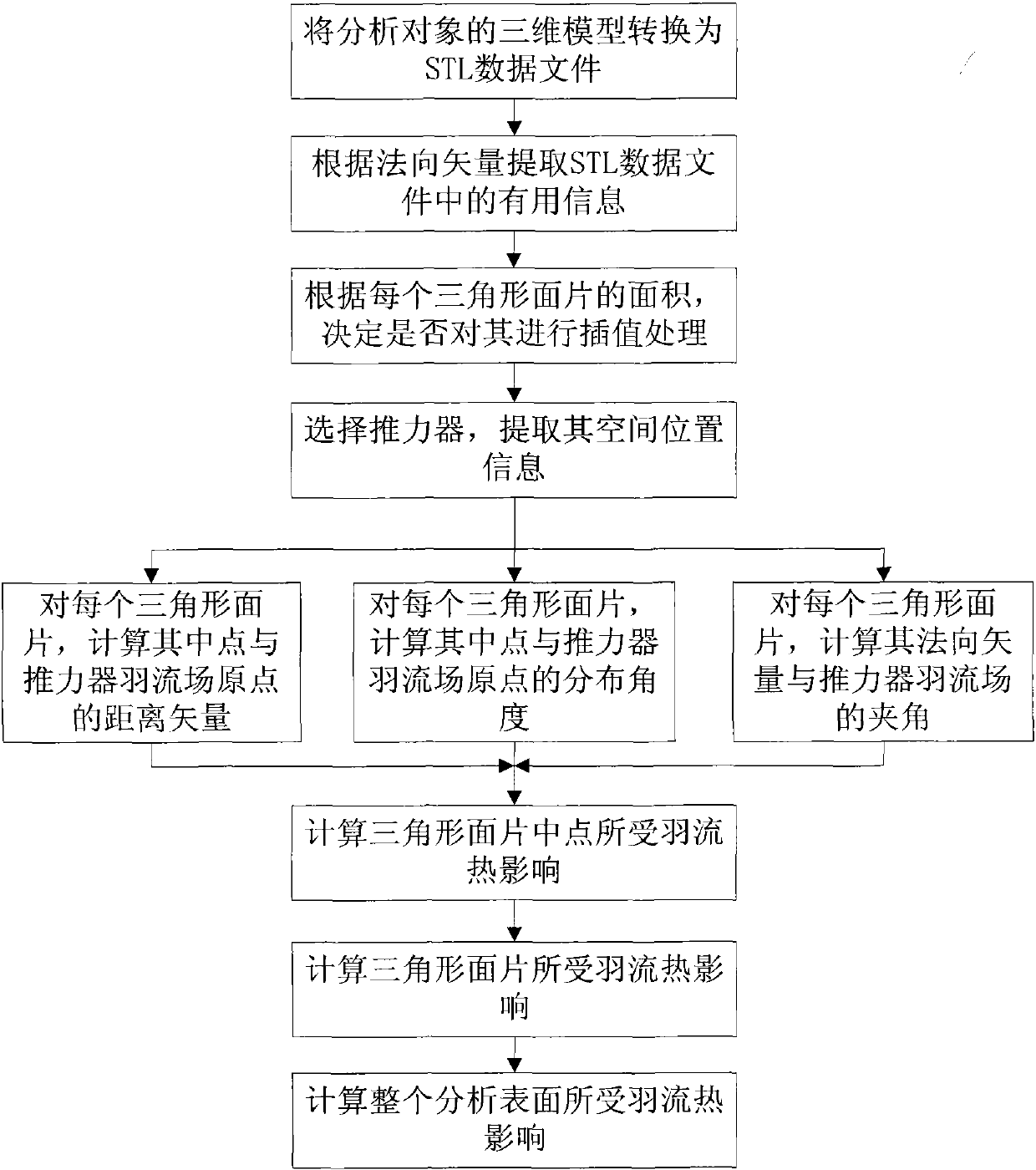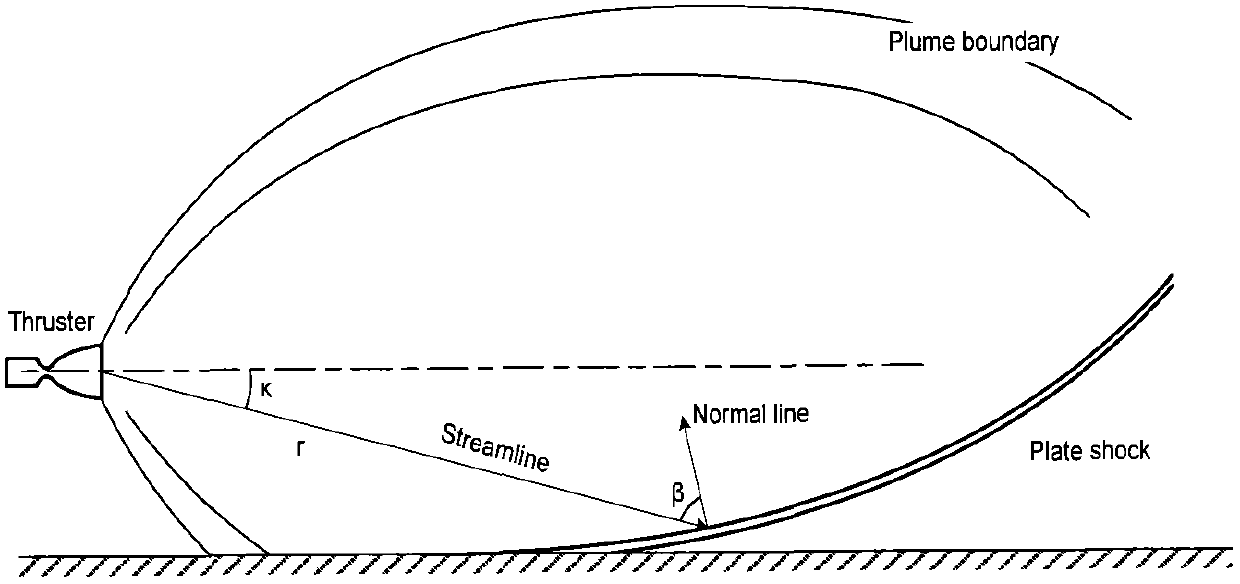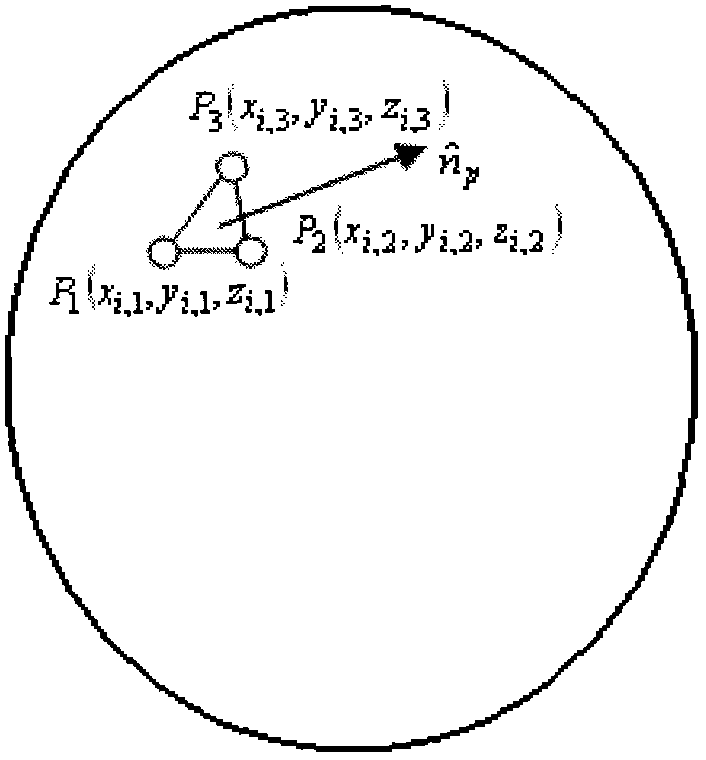STL-Based Analysis Method for Thermal Effect of 10n Thruster Plume on Communication Satellite
A technology of plume thermal impact and impact analysis, applied in the field of satellite design, it can solve the problems affecting the overall thermal effect calculation and inconsistency, and achieve the effect of small geometric particle size and simple area calculation.
- Summary
- Abstract
- Description
- Claims
- Application Information
AI Technical Summary
Problems solved by technology
Method used
Image
Examples
Embodiment 1
[0072] The analysis object adopted in this embodiment is a device that does not need grid interpolation. Set the 3D model of the shaped reflector of the communication antenna and the model after STL meshing see Figure 5 with Image 6 shown. Figure 7 A schematic diagram of the analysis results. The result of thermal effect analysis is: the maximum heat flux density is: 1.2421kW / m 2 ; The maximum heat flux area is surrounded by Point1 (X-18.5mm, 1470.5mm, 4420.5mm), Point2 (X-12.7mm, 1473.8mm, 4423.0mm), and Point3 (X-10.8mm, 1463.9mm, 4416.9mm) The area is 37.6mm 2 The triangular area; the heat capacity of the entire reflective surface affected by the plume is 174.8W.
[0073] If the method in Chinese patent CN201010606039 is adopted, the established model is a standard paraboloid, and the maximum heat flux obtained by analysis is 1.1658kW / m 2 .
[0074] It can be seen from the three-dimensional model of the antenna reflector that the maximum heat flux is an irregular ...
Embodiment 2
[0076] The analysis object adopted in this embodiment is a device requiring grid interpolation.
[0077] Figure 8 The resulting STL mesh for the raw 3D model of the solar wing. It can be seen that although the solar wing has a large surface area, due to its single normal vector, only Figure 8 The 6 triangle meshes shown completely represent the surfaces of the 3 solar wings. Such sparse data cannot be used to analyze the thermal effects of the plume.
[0078] Figure 9 is the grid obtained after 6 iterations using the interpolation method in the present invention. To get a smaller mesh, continue to Figure 9 Iterating over the grid shown, we get Figure 10 grid shown. Figure 11 for right Figure 10 The results of a thermal impact analysis of the mesh plume are shown.
[0079] Table 1 is based on Figure 8 The curved surface shown is the object, and the analysis results are compared by the method of the present invention and the method in Chinese patent CN201010606...
PUM
 Login to View More
Login to View More Abstract
Description
Claims
Application Information
 Login to View More
Login to View More - R&D
- Intellectual Property
- Life Sciences
- Materials
- Tech Scout
- Unparalleled Data Quality
- Higher Quality Content
- 60% Fewer Hallucinations
Browse by: Latest US Patents, China's latest patents, Technical Efficacy Thesaurus, Application Domain, Technology Topic, Popular Technical Reports.
© 2025 PatSnap. All rights reserved.Legal|Privacy policy|Modern Slavery Act Transparency Statement|Sitemap|About US| Contact US: help@patsnap.com



